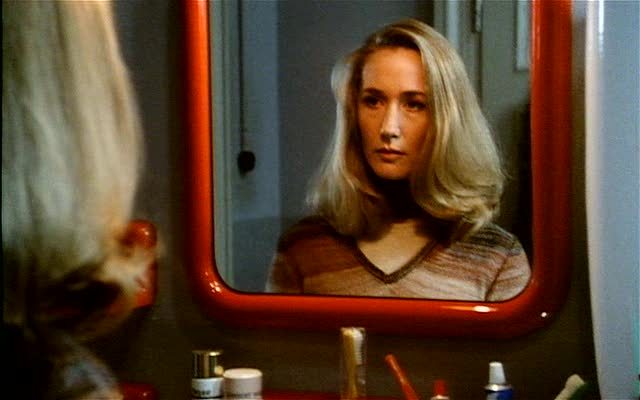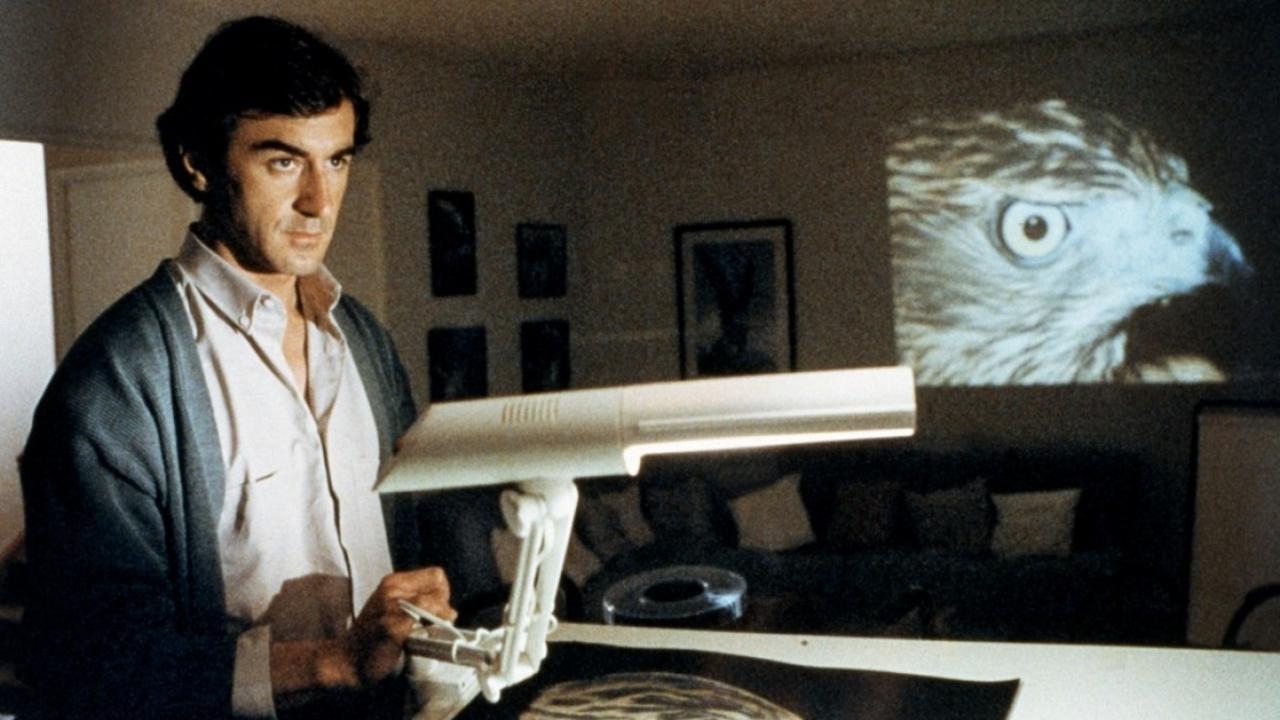Filmmakers have been attracted to Patricia Highsmith’s stories ever since the publication of her first novel in 1950, Strangers on a Train, in which two men meet on the proverbial train and plan to murder someone that the other knows. Even now, there are several projects underway: set for a 2022 release, a Ben Affleck-lead and Adrian Lyne-helmed adaptation of Dark Water, Highsmith’s tale of a cheerless marriage between a disturbed husband and a bored wife; Highsmith’s enduring creation, the slippery sociopath Tom Ripley, will be the star of a series dedicated to his escapades in Ripley.
Highsmith’s work is a well that directors draw from time and time again. Her narratives take shape in the mundane day-to-day world, and yet are intricate, full of moment-to-moment details; they resemble blueprints for ways one could film her work. This may be why so many adaptations have remained in the public consciousness from the likes of Alfred Hitchcock, René Clément, Wim Wenders, Anthony Minghella, Liliana Cavani, and Todd Haynes. And yet there are movies that have been overshadowed by these well-regarded works. This article, written in the year of Highsmith’s centenary, is just one small effort to haul five out of the darkness and cast a light on their brilliance.

Les biches (Claude Chabrol, 1968)
The prodigious French New Wave director, maker of suspense films and thrillers, commentator on the ills of the bourgeoisie, crafted two movies taken from Highsmith texts, Les biches and The Cry of the Owl (1987). Though unacknowledged, Chabrol uses The Talented Mr. Ripley as the loose basis of his movie while still retaining the novel’s latent homosexuality. He inverts the characters from the book: the principal cast consists of two females and one male, rather than two males and one female. In the film, Frédérique (Stéphane Audran) takes a young, lone, and lonely woman named Why (Jacqueline Sassard) under her wing. She even allows Why to live at her Saint-Tropez villa. Why’s impressionable and infatuated with Frédérique. That is until Paul (Jean-Louis Trintignant) comes into their life at a party they host. Why’s instantly attracted to this man and goes out with him only for Frédérique to later seduce and win him away simply because she can. Why is dependent on Frédérique, who in turn has control over her.
After his landmark movies (Les cousins, Les bonnes femmes), and a string of for-hire gigs (such as spy movies Code Name: Tiger and An Orchid for the Tiger), once again Chabrol broke out critically and publicly with Les biches, the movie that began a decade of projects that further defined his talent as a purveyor of stylistically exacting, tonally cynical tales of murder and mayhem among the middle class. He was the perfect director to take on a Highsmith story. His precise, subtle camerawork—always motivated by the characters—suits Highsmith’s rich, detail-oriented prose.

Dites-lui que je l’aime (Claude Miller, 1977)
Adapted from The Sweet Sickness, Miller’s sophomore feature doesn’t have Les biches’ spartan aesthetic; it has more of a budget, as well as the great DP Pierre Lhomme behind the camera, contributing a chilly look. Gérard Depardieu plays David Martinaud, a man who stalks (a key Highsmith theme, along with doubles) a married woman that he knows. Depardieu captures the gradual shift from David’s poised civility to unhinged obsession, which Miller further evokes with sound and image. Working with sound engineer Paul Lainé, for instance, Miller generates great dynamics in the audio, contrasting dreadful silence with blasts of ambient noise from shot to shot. With nods to Taxi Driver and Hitchcock, Miller tamps down the dialogue, relying primarily on visuals as we look at David looking… and following. Using cut-ins and uncomfortable close-ups, he produces a psychological space for Depardieu as he becomes unglued, exploding with psychic and sexual violence on those around him.

The Glass Cell (Hans W. Geissendörfer, 1978)
Like Chabrol, Geissendörfer used a pair of Highsmith books for two of his movies, including 1983’s Ediths Tagebuch (Edith’s Diary), about a married woman who keeps a diary as her personal life disintegrates. Unfortunately, there aren’t any easily available English-subtitled copies, but if The Glass Cell is any indication of the movie’s quality, then it is worth waiting for a copy to eventually show up.
After serving several years for shoddy engineering, resulting in the collapse of a school, a crime he didn’t commit, a middle-aged architect is released from prison, and into the waiting arms of his wife and young son. Phillip is far from the picture-perfect patriarch. A skeevy mobster, one of the associates who funded and collaborated on Phillip’s building, and who never got jail-time, blackmails him by playing him secret tapes of his wife and his attorney. Oh yes, Phillip’s jealous and paranoid. Very.
Geissendörfer (who is still alive and now primarily producing movies) is one of the forgotten figures of the German New Wave. Here, he’s working with a cameraman who made Wim Wenders’ films so distinctive: Robby Müller, who gives The Glass Cell a harsh, almost un-real quality. Nothing like the neons of The American Friend (another movie made from a Highsmith novel, Ripley’s Game) and Paris, Texas.
In this muted rendering of West Germany, Geissendörfer uses choking, closed-off frames to disconnect people. He makes you fully aware of how the space entraps the main characters, especially in the principal setting—Phillip’s flat—which seems uncomfortably large, dwarfing Phillip as he sits in his lazy chair that his wife has preserved for him for the years he has been locked up. Geissendörfer represents what not just Highsmith’s book brings up, but what virtually all post-prison stories do: How does one transition back to civilian life?

Eaux profondes (Michel Deville, 1981)
The success of an adaptation rests on what the director brings to the source material—their personal stamp. How do they transform it? Do they even care about fidelity, does that even matter? How does the filmmaker’s voice interact—or react—to the text? All important questions.
Vic (Jean-Louis Trintingnant) is routinely jealous of Melanie (Isabelle Huppert), his younger wife, and her flirtations with men right underneath his nose. She gives him knowing looks while wrapping her arms around another man, and Vic intimidates him and the rest of the young bucks hanging around her, with his jet-black humor and menacing presence. That is until he takes it too far.
Deville’s movie taps into the cruelty and sadism rooted in Highsmith’s book. He also transcends the material with a style that is plainly his: a quietly assaultive atmosphere created by intoxicating camera movement, and a physicality stemming from not only the performances but from the shots as well. It’s a devilish film and a gem among this batch.

The Cry of the Owl (Claude Chabrol, 1987)
The French really know how to shoot a Highsmith book, and Chabrol is at the top of the heap. This official adaptation, nearly twenty years after Les biches, is an absurd and dark movie in which a stalker, Robert Forestier (Christophe Malavoy), falls into an “innocent man” role as bodies pile up around him. Just one incident sets off a deadly chain of events that unfold as if they were preordained.
As one would expect, Chabrol’s aesthetic has changed since shooting Les biches. Here, his compositions have a harsh geometric precision—and his edits are more pointed, especially in the way he uses inserts. Typical of his work, there’s a logic to the camera movement, a transparency in what Chabrol is trying to convey in images. The mise-en-scène, more often than not, is destabilized, conveying Robert’s psychological state as he’s throttled by everything happening to him. Chabrol provides viewpoints for everyone surrounding the man in question, the mysterious peeper that seems perfectly fine other than that pathology. It’s everyone else who ascribes a meaning to him, who “influences” him.

















